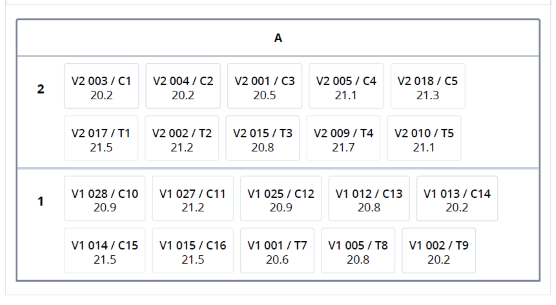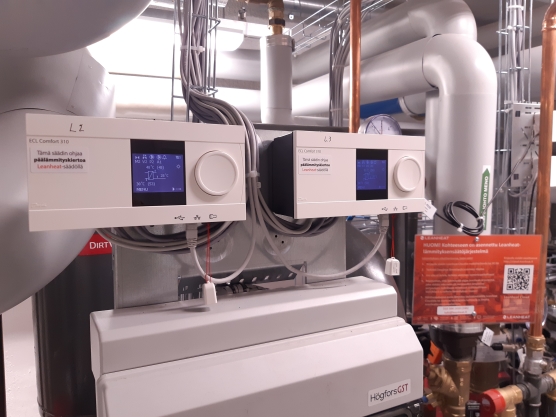
Huhtinen's school is one of 16 sites that use a heat control service. © Porvoon kaupunki.
As part of the Canemure project, the City of Porvoo and Porvoon Energia have implemented a heat control service in 16 public buildings. The heat control service controls the district heating of buildings in real time, keeps indoor conditions constant, saves energy and reduces carbon dioxide emissions.
The control is based on weather forecasts, solar radiation forecasts, indoor conditions in buildings and learning artificial intelligence. The equipment includes more than 700 wireless sensors measuring temperature, humidity and carbon dioxide concentration, as well as property-specific remote temperature controllers.
The remote control room, which operates as a cloud service, enables real-time monitoring of properties and analysis of historical data. Sensors placed in buildings increase property management knowledge, enabling real-time monitoring of, for example, the situation in a class or gym and allowing corrective measures to be taken.
The installation of the heat control service was completed in early 2021. Now, promising results have been obtained from the heat control.

A screenshot from the remote control room showing the house map of a property and the indoor temperatures of different rooms. © Porvoon kaupunki.
Energy savings and emission reductions
During the first ten months, the average energy saving achieved with heat control was around 10 per cent compared to the consumption in 2020 and 2019.
“The results look very good and we are satisfied with them,” says Project Manager Matti Lehtovaara from the City of Porvoo. “One can be particularly pleased with 10% savings, because the original intention was to take only provide heat control to a few sites, but as the project expanded, promising results have been obtained from up to 16 district heating sites.”
“During the upcoming heating season, we will follow the results of the heat control, and then next spring we will consider the possible expansion, that is, bringing in additional sites,” Lehtovaara says.
Entire energy ecosystem benefits
Porvoon Energia, a partner with whom the City of Porvoo has a five-year service contract, and Leanheat Oy, a subcontractor of Porvoon Energia, which provides the service, have played an important role in the project.

Leanheat controls in the building's heat distribution room. © Porvoon kaupunki.
The heat control service benefits the so-called energy ecosystem, that is, everyone involved in the project. “Porvoon Energia is able to reduce the use of energy for us during peak demand, thanks to a proactive system,” explains Lehtovaara. “In this case, Porvoon Energia does not need to deploy reserve power stations so often, for example, during severe frosts, which would be expensive.”
In addition to savings, the control service is also useful for learning. Both Porvoon Energia and Leanheat already have heat control services in use in residential buildings, but now the sensors brought into public buildings provide new information.
“We already have good experiences with similar services, as Porvoon Energia has previously piloted the service in about 50 housing companies. In this project, we will also be able to carry out extensive impact studies in public buildings. Predictive and automatic heating control makes it possible to even out the spikes in demand of district heat and enables the urban battery function,” says Jukka Rouhiainen, Environment and Development Manager at Porvoon Energia.
In terms of heat control, the operating models of residential buildings and public buildings, such as schools and kindergartens, are very different. “The more diverse property types are involved in heat control, the easier it will be for Porvoon Energia to react to demand elasticities,” Lehtovaara sums up.
Learn more
Further information
- Project Manager Matti Lehtovaara, City of Porvoo, firstname.lastname@porvoo.fi, tel. +358 40 676 1377